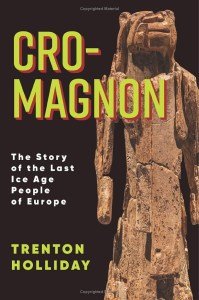Jon Trevelyan (UK)

The Cro-Magnons had been a inhabitants of early fashionable people (that’s, they had been bodily indistinguishable from us, as we speak), who lived in Europe between about 40,000 and 10,000 years in the past, throughout the Higher Palaeolithic interval.
They’re usually thought of to be one of many earliest examples of anatomically and behaviourally fashionable people. In truth, the time period ‘Cro-Magnon’ is commonly used interchangeably with ‘European Higher Palaeolithic people’. These people had been recognized for his or her subtle instruments, artwork and tradition. They created intricate cave work and sculptures, a lot of which have been present in numerous archaeological websites all through Europe, such because the magnificent photos present in Lascaux Cave, in France.
Additionally it is clear that the Cro-Magnons had been expert hunters and gatherers, counting on quite a lot of animals and plant sources for his or her survival. Over the past ice age, Europe was a chilly, dry place, but it surely was nonetheless teeming with mammoths, woolly rhinoceroses, reindeer, bison, cave bears, cave hyenas and cave lions. Our information of them comes from both their skeletons or the instruments, artwork, and particles they left behind.
This data comes from Trenton Holliday’s wonderful guide, which tells the story of those individuals within the context of latest scientific advances. Nevertheless, whereas it doesn’t shrink back from complicated scientific points, the guide is written with a lightweight, comprehensible contact.
Holliday is a US paleoanthropologist, who has studied the Cro-Magnons all through his profession, particularly, in mainland Europe (there are only some Cro Magnon stays from the UK). In his guide, he asks questions reminiscent of:
- The place/when did anatomically fashionable people first emerge, and when did they attain Europe, and the way did they get there?
- Did they work together with (together with breeding with) Neandertals?
- What did they appear like?
- What did they eat, and the way did they get their meals as hunter gatherers?
- What do their skeletons inform us about their lives?
- How did they deal with the ice age chilly and the way did they reply to postglacial warming, 12,000 years in the past?
- And, what does their artwork inform us about them?
These are huge and wide-ranging questions, however Holliday gives new insights from two views:
- firstly from the perspective of the organic anthropologist, who research evolution, behaviour, and genetic and morphological variations; and
- secondly, from the attitude derived from Palaeolithic archaeology – that’s, from the particles left behind by these prehistoric individuals.
I believe this was an enchanting guide, and simple to learn. You’ll be taught a terrific deal about these early Europeans and I heartily advocate it.
Trenton Holliday is a paleoanthropologist, who was concerned within the discovery of Homo naledi, discovered within the Dinaledi Chamber of the Rising Star Cave system in South Africa in 2015. He is a professor and Anthropology Department Chair at Tulane University in New Orleans, Louisiana, the place he teaches human evolution, purposeful morphology, and fashionable human adaptation and variation. He research the origins of Homo sapiens, the origin of the genus Homo, the destiny of the Neanderthals, hybridisation amongst extant mammals, and late Australopithecus. Holliday got his BA in anthropology from Louisiana State University (1988) and MA (1991) and PhD (1995) in anthropology within the University of New Mexico.
Cro-Magnon: The Story of the Final Ice Age Folks of Europe, by Trenton W Holliday, Columbia College Press, New York (2023), 296 pages (paperback), ISBN: 978-0231204965.
Trending Merchandise










